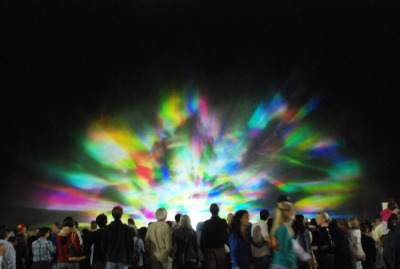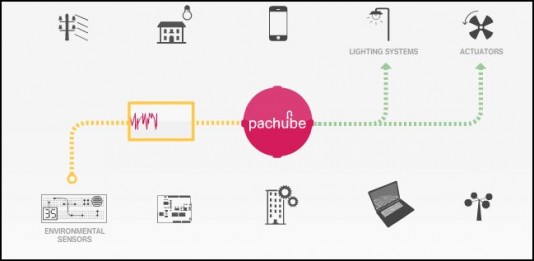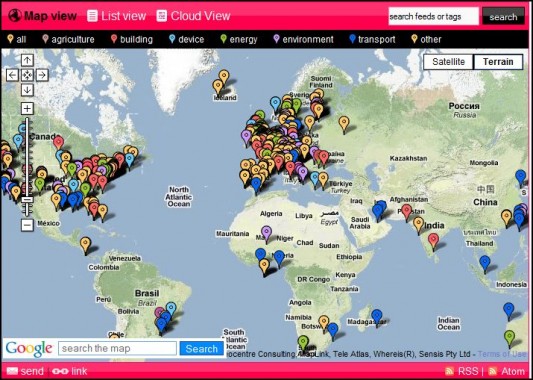Want to track radiation levels in Japan? How about harnessing the data from the world’s Internet-enabled refrigerators? Where there is a sensor, there is data waiting—even longing—to be used.
Usman Haque of Haque Design and Research Ltd. is the founder of Pachube.com. He is also the CEO of Connected Environments Ltd. Haque is fascinated by the interaction of people with each other and people with machines. He was a huge hit at the recent SmartGeometry conference in Copenhagen, where he showed some of his performance art projects developed through Connected Environments.
His 2004 project Sky Ear floated a cloud of 1,000 helium filled balloons with six ultra bright LEDs mobile phones. It floated 60 meters above the National Maritime Museum in England. People could dial into the cloud to hear “the sounds of the sky.” The balloons would react to the electromagnetic environment influenced by mobile phones, storms, police and ambulance radios, TV broadcasts, etc., and they would change colors. The act of calling the cloud caused the balloons to react as well.
In another installation called Primal Source, Haque set up near the Santa Monica Pier in Los Angeles, California. He created a large outdoor waterscreen/mist projection system that glowed with colors and reacted to people’s shouts, screams, etc. People figured out ways to collaborate to interact with the images; Haque provided several modes for people to play with.

All of which brings us to Haque’s current interest, Pachube.com. It’s a continuation of his experiments in connecting people through real-world inputs. The name Pachube was inspired by the word patchbay, a board or panel that enables people to plug in patch cables. Pachube’s motto is “patching the planet.” It’s a web site that acts as a central data hub for sensor information. Haque sees it as the start of building “an internet of things.” The idea is that people can share data from the sensors that exist in their lives such as electricity meters, home-automation devices, etc. There is also demand for information flowing from sensors all over the world. Right now the most dramatic demonstration of Pachube’s potential is visualizations coming from Japan that show radiation levels around the country and especially near the nuclear reactor. Haque sees Pachube as a tool for understanding the environment, for getting feeds from the stuff that has an electronic pulse and the means to communicate it to better understand what’s going on around the world.

He was among friends at the SmartGeometry conference, where people were already taking advantage of Pachube to monitor feeds from their sensors. In one of the experiments called Authored Sensing by Kyle Steinfield of the University of California at Berkeley, they were using sensors to monitor the SmartGeometry work shops—yes, they were monitoring the monitors. Through all the talk of data and how to use data, Steinfield’s concern was, how well do we know the data? Do we know who put it out there and why? He was exploring ways to annotate data as it is made available so that it can be used in more meaningful ways. Steinfield is interested in ways to automate the process as well as allow input. This was one of those rare panels where you could actually see sparks fly and no one wanted to let the discussion end.
The discussion doesn’t really end either. The SmartGeometry movement just moves the conversation forward.






